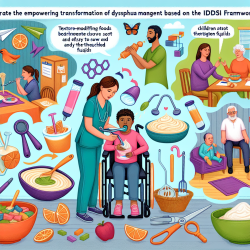Introduction
The field of circus arts, while captivating, poses unique challenges, particularly concerning the risk of injuries. The recent study titled "Untangling Risk Factors Including Discipline-Specific Exposure for Injuries in Preprofessional and Professional Circus Artists in the USA" provides valuable insights into these risks. By understanding these risk factors, practitioners can enhance their skills and contribute to improved safety and performance outcomes for circus artists.
Understanding the Study
This study offers a comprehensive analysis of injury patterns among circus artists, focusing on intrinsic factors such as age, sex at birth, and medical history, as well as extrinsic factors like specific circus disciplines. The study involved 201 participants across various cities in the USA, monitored over a year to identify injury patterns and their associated risk factors.
Key Findings
The study identified several critical findings that practitioners can leverage:
- Injury Rates: Males exhibited higher injury rates, particularly in aerial disciplines with ground elements. Understanding these patterns can help practitioners tailor training and prevention strategies.
- Discipline-Specific Risks: Aerial disciplines showed higher injury rates compared to ground disciplines, highlighting the need for discipline-specific safety protocols.
- Age and Experience: Adults faced more aerial-related injuries, whereas adolescents experienced more ground-related injuries. This suggests the need for age-specific training and injury prevention programs.
- Medical History: Individuals with a history of eating disorders were more prone to injuries, emphasizing the importance of comprehensive health assessments in injury prevention strategies.
Implications for Practitioners
Practitioners can enhance their skills and improve outcomes for circus artists by integrating these findings into their practice:
- Data-Driven Training: Utilize injury data to inform training regimens, focusing on high-risk disciplines and demographics.
- Holistic Health Assessments: Conduct thorough health assessments, including medical history and physical evaluations, to identify potential risk factors.
- Customized Injury Prevention Programs: Develop tailored injury prevention programs that consider age, discipline, and individual health profiles.
- Continuous Research and Adaptation: Encourage ongoing research and adaptation of practices based on emerging data and trends in circus arts injuries.
Conclusion
By embracing a data-driven approach, practitioners can significantly enhance their skills and contribute to safer, more effective training environments for circus artists. The insights from this study provide a foundation for developing targeted injury prevention strategies that address the unique challenges of circus arts.
To read the original research paper, please follow this link: Untangling risk factors including discipline-specific exposure for injuries in preprofessional and professional circus artists in the USA.










